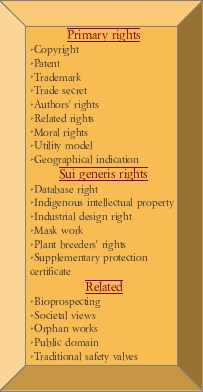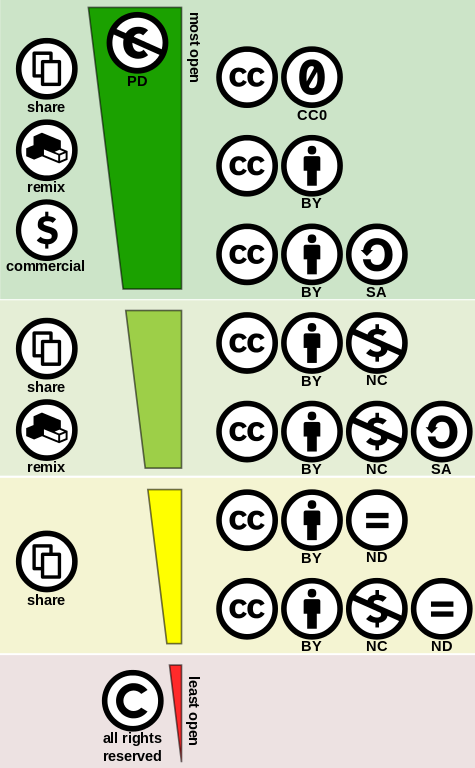In the field of R&D and invention we often come up against the question of “how do we want to share this?” There are many things to take into account from copyrights to trademarks, trade secrets to industrial design rights. And that’s just scratching the surface. Take a look at the list below for a deeper scratch — though it’s a good list, it’s not even close to exhaustive.

While it can get pretty complicated, we’re going to take one at a time to open up the discussion on what your options are to protect, share, and disseminate your work. We’re going to start with the most easily accessible for most people: public domain.
Works that are in the public domain are works where the copyright has expired, been forfeited by the creator, or is inapplicable in the first place. Everything thing else is pretty much the opposite of public domain.
Expired works
Eventually the copyright of a piece of work expires. However, to know when this expiration date is, you have to know the country of copyright’s law — and even this is no guarantee there hasn’t been an extension filed to extend the copyright period.
Despite of this, the general rule of thumbs for each country is the life of the creator, plus a number of years. The most common is 50 to 70 years, but there are outliers. For example, Mexico gives an additional 100 years on its copyrights.
Inapplicable works
Works that are inapplicable to copyright laws can get vague, but they are there. For example, you can’t copyright an idea that is expressed or manifested in a work. These are things like mathematical expressions and formulae, clothing styles (though you can copyright the image on the clothing), colours, and other things in common use.
Other things that do not have a copyright are works that were produced before copyright laws were set up. So, old works from Aristotle, Hero of Alexandria’s inventions, and others from ancient history can not be copyrighted. An addendum to this is that works built off of those that were released before copyright laws, such as a translation of Aristotle, may be copyrighted and subject to modern laws.
Forfeited rights

Any creator can forfeit their rights and give their works to the public. This is as easy as applying a creative commons license to your work, and putting it out there on the market. Creative Commons, or CC as it’s fondly shortened to, is a way to share your work for the public, but retain some of your rights. For example, when you create something, you can choose to label it with a creative license to let people know that you offer it to them to do a range of things with. You can give them permission to tweak it, change it, sell it, or not as you wish. Many things here on Insanitek use the “CC BY-NC-SA” license, which means that you can take any picture and most works here and remix, tweak, and build upon our work non-commercially, as long as you credit the original creator and license your new creations under the identical terms.
How to use CC with your creative work and inventions
Now, you might think that putting your work out there like that means you are giving up all your rights. This isn’t so. Every blog post you write, every white paper you release, every tidbit of knowledge you share through a webinar, and every workshop you teach can be considered as something you can apply a CC license to. To put things in perspective, even the renown open access journal PLoS releases the works under a CC license. Specifically, they use the CC BY license, which allows others to distribute, remix, tweak, and build upon the work, even commercially, as long as they credit the author for the original creation. This is the same thing as any other type of academic journal in practise.
You have the power to decide how you would want them to share your insight and knowledge with the world. Take a look at the different types of CC licenses, and you’ll see that you have a range of options at your disposal. You can let people do a lot of things with your work, including make money off your ideas, you can restrict them to just sharing it around, or anything in between. When you do encourage this sort of interaction with your work, you can generate a lot of interest, excitement, and possibly even recruit some help to make your project go beyond what you can do.
Interested in reading more? A great, public domain, resource can be found at The Value of the Public Domain which has a bunch of collected works on the debate.
Previous: Invention Process
